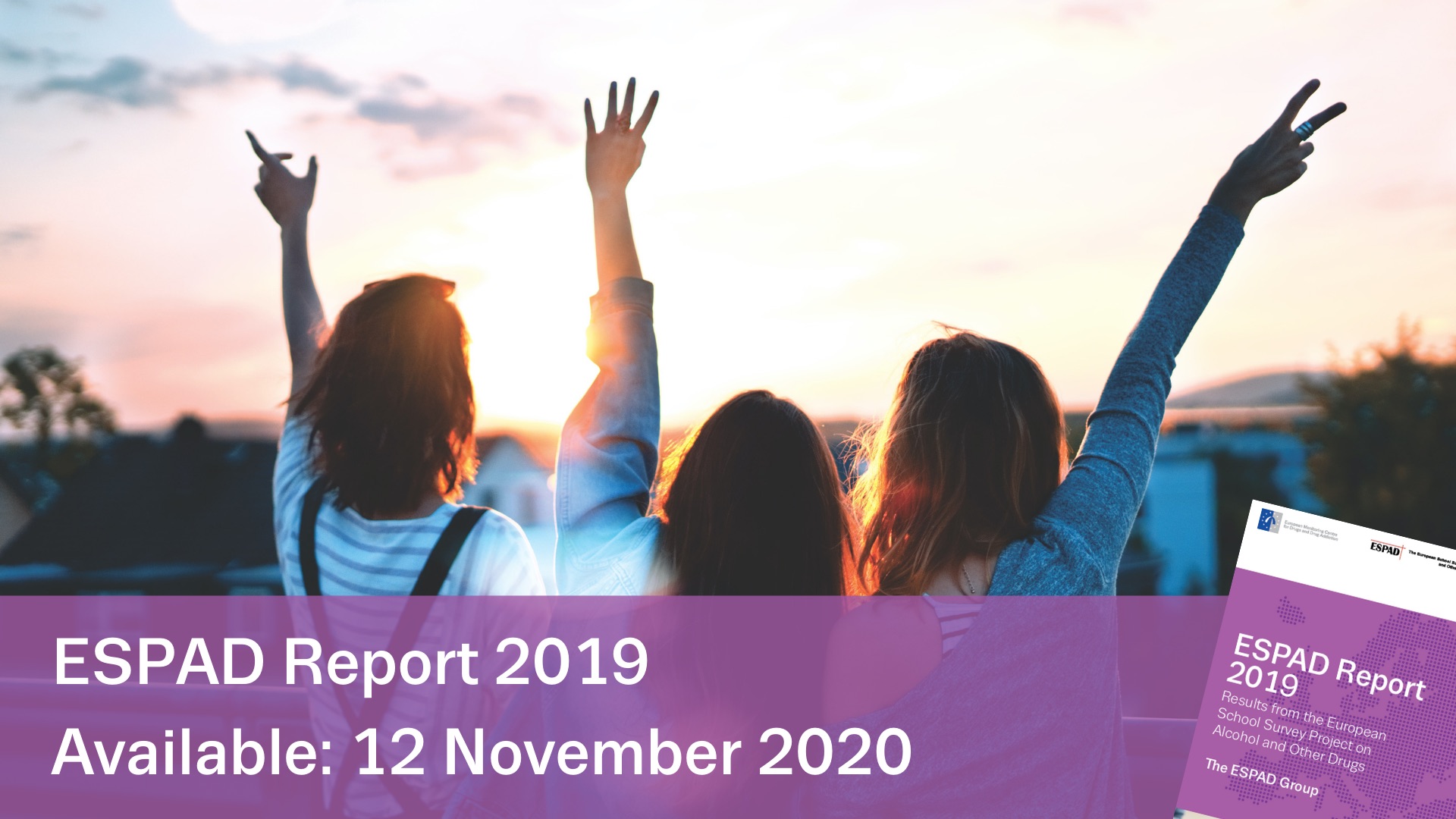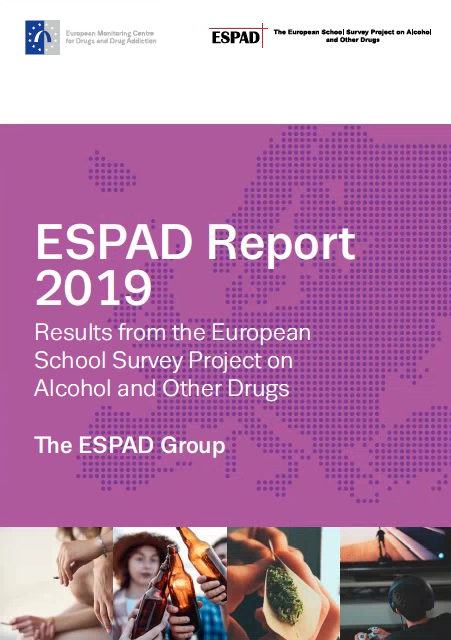ESPAD Report 2019
ESPAD report 2019
ESPAD Report 2019
The latest European School Survey Project on Alcohol and Other Drugs (ESPAD) report is now available for download.
Almost 100 000 students participated in the latest survey round, responding to an anonymous questionnaire. The ESPAD Report 2019 features information on students’ experience of, and perceptions about, a variety of substances, including: tobacco, alcohol, illicit drugs, inhalants, pharmaceuticals and new psychoactive substances. Social media use, gaming and gambling are also covered. You can download the report and access all of the source data on this page.
#ESPAD
ESPAD Report 2019
ESPAD Report 2019
This report presents the results from the seventh wave of data collection, conducted in 35 countries during the spring and autumn of 2019. It gives a comprehensive picture of the present situation among European young people as regards the use of cigarettes, alcohol, illicit drugs, inhalants, new psychoactive substances and pharmaceuticals, but also insights into gambling, social media use and gaming. The report also presents an overview of trends over the time period 1995-2019.
Additional materials
The following elements also form part of the ESPAD Report 2019 package:
To download source data in Excel format, please click on the Source data tab above.
Launch details
Publication date and time: 12 November 2020 (approximately 10AM CET)
Stay informed: the publication will be announced here as well as on the EMCDDA website and social media channels

Webinar
To mark the report's launch, the EMCDDA is organising a webinar entitled:
'The European School Survey Project on Alcohol and other Drugs (ESPAD) — new results and stakeholder feedback'
The webinar will be in the format of a conversation with the ESPAD project coordinator and key stakeholders and is open to all.
More details on this event including registration information can be found on the EMCDDA website.
Data tables
Source data in Excel format may be downloaded using the links below. The source data has been split into two separate archives: (1) data used to generate graphics and tables in the main report and (2) additional tables with more results not presented in the main report.
